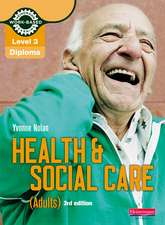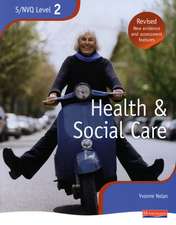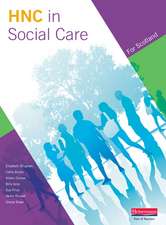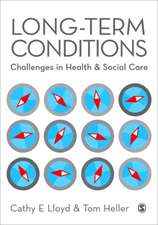Bridging the Gap Between Asset/Capacity Building and Needs Assessment: Concepts and Practical Applications
Autor James Altschulden Limba Engleză Paperback – 17 feb 2014
Preț: 471.25 lei
Nou
Puncte Express: 707
Preț estimativ în valută:
90.17€ • 94.34$ • 74.91£
90.17€ • 94.34$ • 74.91£
Carte tipărită la comandă
Livrare economică 03-17 aprilie
Preluare comenzi: 021 569.72.76
Specificații
ISBN-13: 9781452220192
ISBN-10: 1452220190
Pagini: 264
Ilustrații: Illustrations
Dimensiuni: 152 x 229 x 14 mm
Greutate: 0.34 kg
Ediția:1
Editura: SAGE Publications
Colecția Sage Publications, Inc
Locul publicării:Thousand Oaks, United States
ISBN-10: 1452220190
Pagini: 264
Ilustrații: Illustrations
Dimensiuni: 152 x 229 x 14 mm
Greutate: 0.34 kg
Ediția:1
Editura: SAGE Publications
Colecția Sage Publications, Inc
Locul publicării:Thousand Oaks, United States
Recenzii
“There is great tension between the two camps – and if this book can bring the two together to a certain extent it will be a valuable tool.”
“Building capacity is an important concept to develop in areas like Emergency/Disaster Planning and Community Relations. In addition to its scholarly value, it could be useful for practitioners too.”
“The material reflects a strengths-based model that is among the best-practices currently available.”
“Combining two approaches that are complementary in many ways…novel idea, have not seen this proposed before.”
“…Highlights the value of both Needs Assessment (NA) and Assets Based Community Development (ABCD), moving beyond “either/or” thinking about the knowledge and skills that are needed to bring about community change.”
“It provides a very good step-by-step approach to identifying community challenges and assets/capacities and how to develop plans to address them. Realistic and practical.”
“The virtue of this text is that it is specific, sequenced, and offers a number of examples useful to students who find the content somewhat novel. For social work, students can bring this kind of text into the practicum environment and employ it as a road map for working with community members in completing projects. So, the text lends itself to project-based, problem-focused, and/or action learning. This is an asset. “
“I have seen nothing as thorough as this work. No one else synthesizes the material the way the author has done. I enjoyed the continuum from cooperation to collaboration and found the needs and assets discussions to be useful.”
“Building capacity is an important concept to develop in areas like Emergency/Disaster Planning and Community Relations. In addition to its scholarly value, it could be useful for practitioners too.”
“The material reflects a strengths-based model that is among the best-practices currently available.”
“Combining two approaches that are complementary in many ways…novel idea, have not seen this proposed before.”
“…Highlights the value of both Needs Assessment (NA) and Assets Based Community Development (ABCD), moving beyond “either/or” thinking about the knowledge and skills that are needed to bring about community change.”
“It provides a very good step-by-step approach to identifying community challenges and assets/capacities and how to develop plans to address them. Realistic and practical.”
“The virtue of this text is that it is specific, sequenced, and offers a number of examples useful to students who find the content somewhat novel. For social work, students can bring this kind of text into the practicum environment and employ it as a road map for working with community members in completing projects. So, the text lends itself to project-based, problem-focused, and/or action learning. This is an asset. “
“I have seen nothing as thorough as this work. No one else synthesizes the material the way the author has done. I enjoyed the continuum from cooperation to collaboration and found the needs and assets discussions to be useful.”
Cuprins
1. Beginnings
2. Synthesis of Needs Assessment and Asset/Capacity Building
3. Looking Closely at the First Three Critical Steps of the Framework
4. Step 4 in the Hybrid Framework
5. Steps 5-8: Completing the Hybrid Process
6. A Checklist for the Hybrid Framework
7. Cases Exhibiting Hybrid Framework Characteristics: Examples From Public Health
8. Cases From Other Fields
9. Research and Utilization
2. Synthesis of Needs Assessment and Asset/Capacity Building
3. Looking Closely at the First Three Critical Steps of the Framework
4. Step 4 in the Hybrid Framework
5. Steps 5-8: Completing the Hybrid Process
6. A Checklist for the Hybrid Framework
7. Cases Exhibiting Hybrid Framework Characteristics: Examples From Public Health
8. Cases From Other Fields
9. Research and Utilization
Descriere
The goal of Bridging the Gap is to provide a book that takes a competing approach to Needs Assessment and shows the alternative side - the capacity building and assets of communities and individuals.







